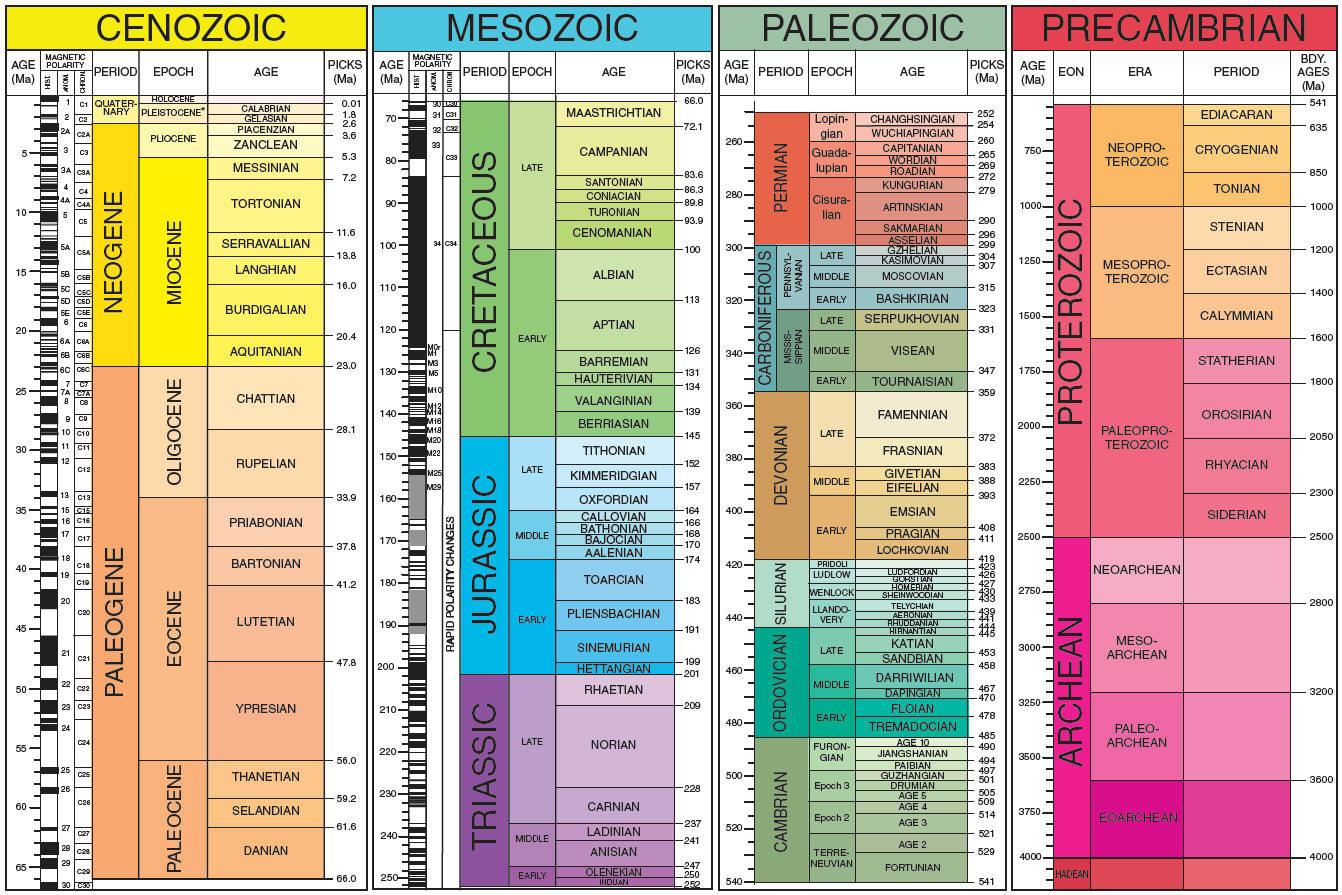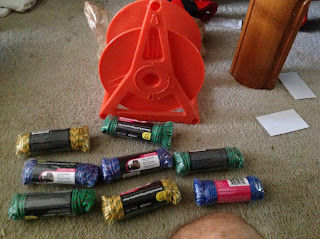So the question is always how to explain to students what 4.6 billion years of history actually looks like. Worksheets, articles, and videos all do a decent job, but this year I went a different route. We started with students investigating various types of geological time words: Eon, era, period, epoch, ages. We compared those to years, months, days, hours, minutes, and seconds. Each word connects to a longer period of time and it is possible to say we're living in 2015 as well as saying it is September, or it 5:00 pm.
From there they investigated 4.6 billion years of history in one of three ways: an article, a brainpop video, or the geological timeline. The goal wasn't to master any of the vocabulary or concepts, but just to get some familiarity with the material.
4.6 billion years of history in an itty bitty space
The next two days they did nothing but ask me about what I meant. All I told them is "don't be absent otherwise you'll have to build your own time machine and go back in time to see mine!"
Amazingly, I had perfect attendance for my next class.
But first I had to build it.
When students arrived we did a quick entrance ticket on half life and then they got into their guilds to discuss what item they studied and what facts they remember. Students started discussing many of the vocab words, concepts, and I had to make some clarifications, but overall there was a great supply of knowledge shared.
From there I said we would be going back in time 4.6 billion years. Each group was given four flags with major events from the geological timeline: fish first appear, dinosaurs first appear, dinosaurs go extinct, humans first appear. Their task was going to be to place the flag on the correct spot of the timeline.
My time machine was definitely a step down from a Delorean
The students went to the playground field and were told we would walk back in time. As we did we'd see lots of historical events, but their job was to find the four they've been given. I explained that there were many colors of rope, and that there was an orange piece of tape in the middle of each rope color. I also gave them a paper with a scale on it: one foot = 12,000,000 years, color changes = 600,000,000 years, end of rope to tape = 300,000,000 years, and tape to tape = 600,000,000 years.
We walked the timeline back and ended 400 feet from the present day, reviewing the scale for the first few tape marks and color changes. From there I gave them 15 minutes to debate and decide where their flag should go. Each person was in charge of their own flag, so if there was a disagreement the owner of the flag had the final say.
Then I just let them go. The debates and discussion was amazing. Students cited evidence from their reading or video, used visual references from the time line they may have studied, and recalled their previous information to help build their hypothesis. They were outside with nothing but their flag and their brains - no notes, no computer, just recall - but they were all actively engaged and using evidence. They also were working on disagreeing respectfully - a skill that we practiced the first few days while we were building our classroom culture.
Me standing in present day, my co-teacher about 1 billion years in the past, and dots of children at the birth of Earth.
After 15 minutes we had many different places of the flags. We talked about which was easier: deciding the order or deciding the placements. The students made the connections to relative and absolute age from previous lessons and were able to experience how much easier one is than the other. When I asked how many flags their group put in the right place, all of them predicted zero.
Different color flags represented different groups.
And it led to some fantastic debate
When time was up, students came back to the birth of Earth. I grabbed my meter wheel (top left photo) and we started walking the timeline together. We examined sixteen major events, with the four they placed among 12 other key items.
There were so many OMG moments and WHOA I DIDN'T REALIZE comments during the return to present time. "Before we can have life, the Earth needed a crust... and that took... {walk walk walk} 15 meters, or about 600,000,000 years. As we passed flags students picked them up to see how accurate they actually were.
Below is the table I used as we walked the geological timeline.
We did some processing in the field. The biggest take away was how long it took for fish to appear. When we returned to the classroom students completed a 3-2-1 exit ticket involving things they learned, whoa moments, and lingering questions. Here are some of their responses:
"WHOA" moments:
I never realized how short of a time humans have been around! Dinosaurs were around for like 150 million years but humans have only be around for 2 million!I knew that humans were the newest flag, but I didn't realize fish have been around for so long!
Life really just started on this planet compared to how old it is!
It took longer for the crust to form than when fish first formed to today!
When life started forming it happened fast! like we did almost the whole timeline before we hit fish but then it was like every meter we stopped!
and my favorite:
At one point algae was the highest form of life on this planet.
What do you want for dinner? SUNLIGHT? MY FAVORITE!









Thank you for sharing your sequence of learning in detail. I love the use of technology for research and then abandoning the hospital for application. Lucky students!
ReplyDeleteThank you! I kept debating on the events, and originally had one event per student, but decided this led to much better discussion.
ReplyDelete